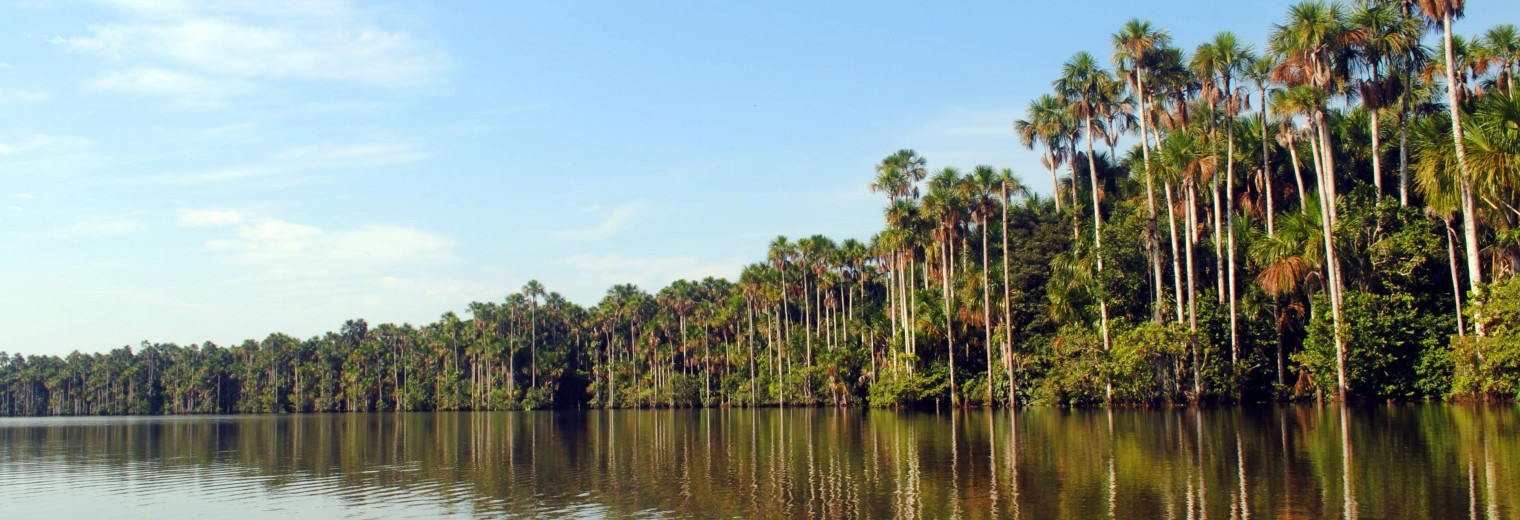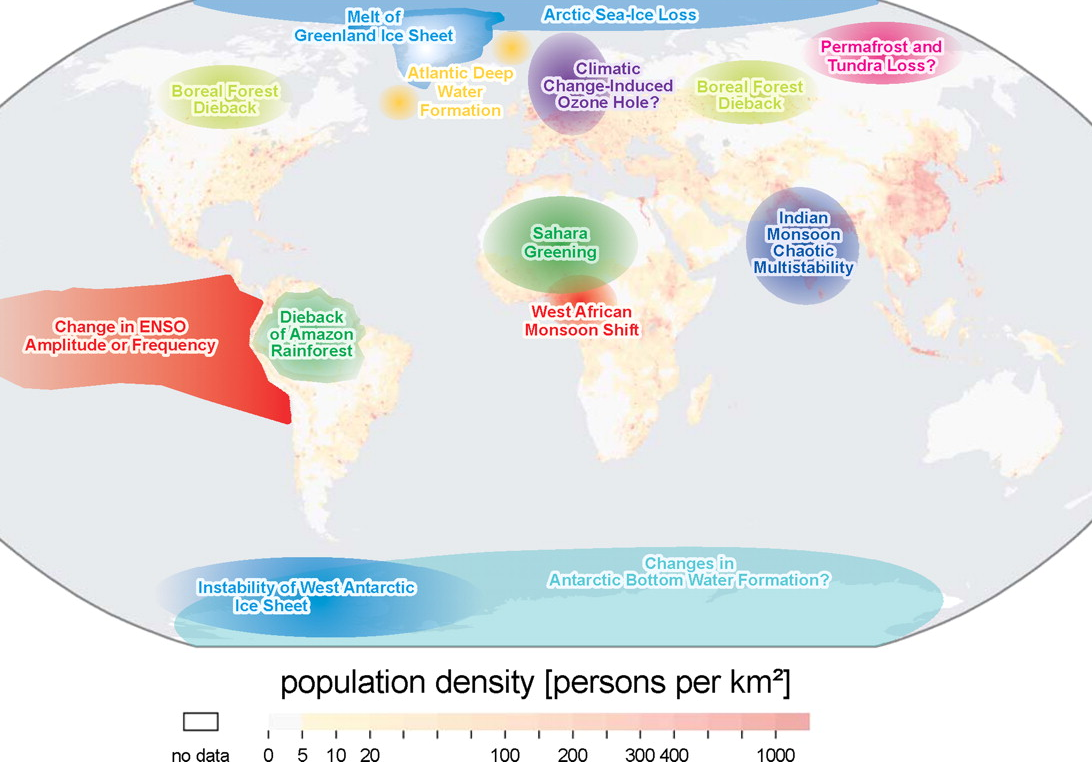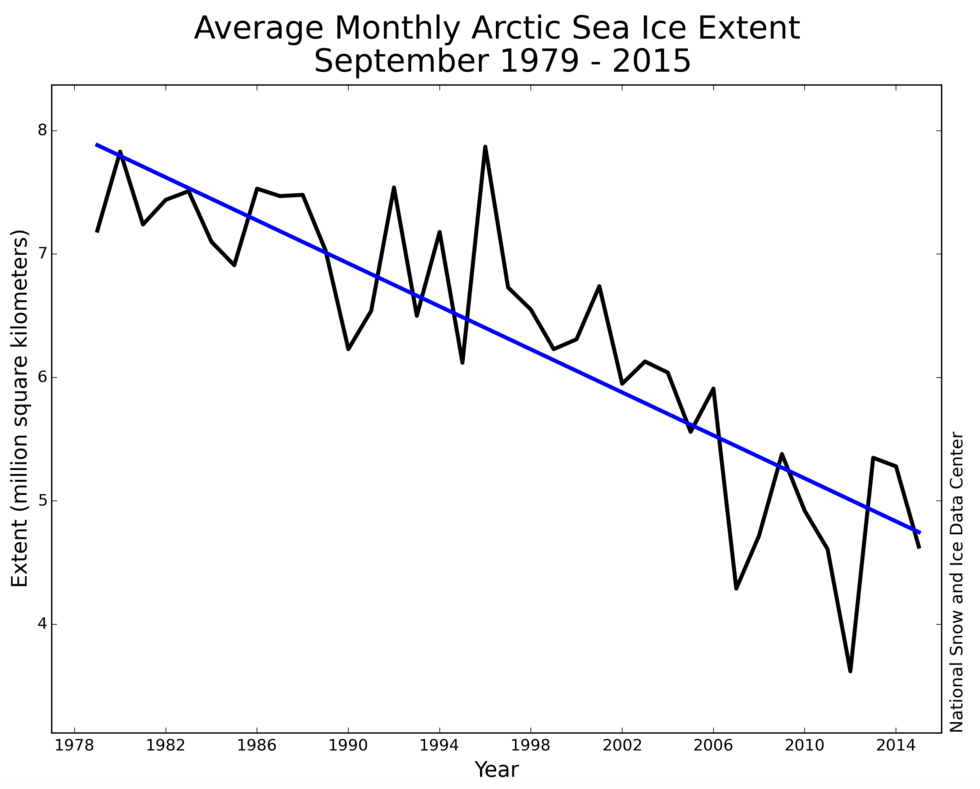Welcome back! This has definitely been an eventful week! It started off well with the release of Leonardo Dicaprio's
Before the Flood documentary but ended disastrously with the electoral victory of a
climate sceptic as President of the United States. I hope that those in power would recognize the consensus of anthropogenic climate change and the increasing likely reality of irreversibility and impending tipping points.
In one of the first comprehensive study of tipping elements in the climate system, Lenton et.al (2008) identified 8 major scientifically probable tipping elements regional to global implications. Three major classes of tipping elements were identified as shown below:
2. Circulation Change (Atmospheric and Oceanic)
3. Biome/Ecological Loss
It should be noted that by separating tipping elements in distinctive classes does not necessarily mean that tipping elements operate independent of each other but are instead interconnected to each other and other areas of concerns. I will first be focusing on the Arctic as it has the greatest number of identified potential tipping elements across the three classes. In this post, I will focus on melting ice and in particular the current status of Arctic Sea Ice.
Arctic Ice Sheet
The Arctic ice sheet is highly sensitive to climatic changes. Considerable thinning, record minimum in multi-year ice extent and a declining in summer (September) sea ice extent have all been observed in the past century (
Holland et.al. 2006). Six of the lowest summer ice extent in satellite history had been observed in the period between 2007 and 2012 (Livina and Lenton 2012). Observations and model simulations have shown, with relatively high certainty, the presence of a critical threshold by which summer ice would permanently disappear.
Warming in Arctic temperature affects the entire suite of ice-ocean system and may have the potential to cause rapid changes in the earth system. The dominance of positive feedbacks in the Arctic is instrumental in amplifying warming and accelerates ice retreat and thinning, resulting in possible ice-free summer conditions. This has been termed 'Arctic amplification' and has largely been used in paleoclimatology. Outlined below are the three major positive feedback loops amplifying rises in global mean sea surface temperature and subsequently drives rapid decline in thickness and extent of sea ice (
Miller et.al. 2010):
1. Ice-Albedo Feedback - Fresh snow and sea ice has the highest albedos (reflectivity of solar radiation) of any land surface on Earth.
Increases in temperature from anthropogenic warming --> reduction in seasonal/areal extent of sea ice --> increase exposure of open ocean--> reduction in albedo --> stronger absorption of solar radiation --> further rise in sea surface temperature
2. Vegetation Feedback - Tundra and vegetated lands are abundant in Arctic inlands and can contribute to warming through positive feedbacks
Seasonal reduction in extent and duration of snow cover --> increased vegetation response with advancement of dark shrubs --> reduction in albedo -> stronger absorption of solar radiation --> further rise in sea surface temperature
3. Permafrost Feedback - Large stocks of methane hydrates are present in continental shelves of the Arctic. It is also a carbon sink in recent decades (
McGuire et.al. 2009)
Warming melts ground ice --> extensive permafrost thaw --> release of frozen carbon and methane into the atmosphere --> accelerate rate of climate change
It is therefore clear that these positive feedbacks may induce non-linear behaviour which, at a critical threshold, may tip the entire system into a qualitatively different state. Non-linear shrinking and thinning of Arctic sea ice have been observed since 1988, leading to some suggesting that a critical threshold has already been passed.
Lindsay and Zhang (2005) suggested the dominance of internal system response over response to external forcing since 1989 beyond which positive feedback loops were increasingly capable of triggering initiation of continual rapid thinning and shrinkage even when external forcing remained relatively unchanged. Other studies have employed an alternative definition of tipping point in terms of summer sea ice extent but are in agreement about the role played by ice-albedo feedbacks and open water formation. Using 7 ensemble model simulations from the IPCC, there was general agreement that reduction in summer sea ice is a universal feature in the 21st century with a 60% decrease in sea ice in a decade and summer ice-free conditions by 2040 (Fig.1) (
Holland et.al. 2006). Furthermore, some even suggests impending year round ice-free conditions when polar temperature rises above -5 degrees and positive feedbacks disturbs linear relationships between sea ice and climate (
Winton 2006).
However, some have suggested that ice extent recovers and a tipping point is unlikely to exist in the foreseeable future. It was suggested that positive ice-albedo feedbacks are not permanent and anomalous summer ice loss is reversible by large-scale recovery mechanisms. Anomalous summer ice loss due to positive ice-albedo feedbacks are reversed when anomalously warm atmosphere causes increased heat loss and decreased heat gain adaptations at the top of the atmosphere (
Tietsche et.al. 2011). It is therefore clear that there are considerable uncertainties in whether or not a certain critical threshold exists and whether it has already been passed or not. To sum up,
Duarte et.al. (2012) raises an important point that descending into a semantic argument of what constitutes a tipping point in Arctic sea ice loss and whether or not a threshold has been passed detracts from the urgency of the situation and the need to avoid the increasing reality of dangerous climate change in the Arctic.




















